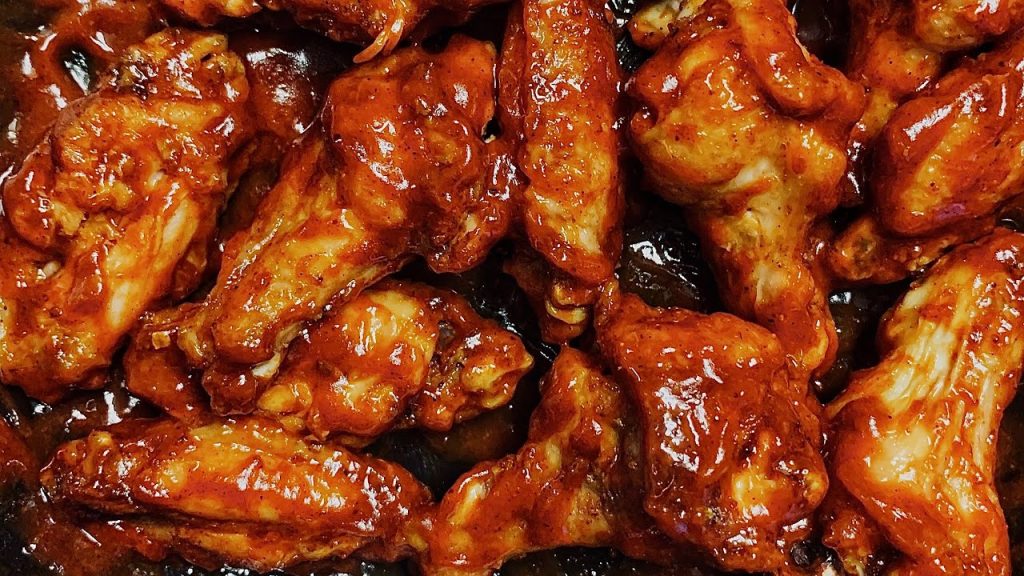Creating delicious, saucy wings that pack a punch in every bite is an art form that involves a blend of the right ingredients and techniques. Whether you’re a casual cook or a culinary aficionado, you’ve probably faced the challenge of getting that delectable sauce to stick perfectly to your wings. It’s not just about slathering on sauce it’s about making sure that each wing is evenly coated and that the sauce adheres well, enhancing both flavor and texture.
The process to achieve this starts long before the sauce meets the wings it begins with how you prepare the chicken, how you cook it, and even how you handle the sauce. Below are detailed guidelines that break down each step, offering a comprehensive approach to achieving irresistibly saucy, finger-licking good wings.
Getting sauce to stick to wings is an important part of creating a satisfying dish. The key to achieving this involves a few steps that focus on the texture of the wings, the consistency of the sauce, and the method of application. Here’s how to go about it:

Preparing the Wings:
- Dry the Wings: Moisture is the enemy of crispiness, and crispiness is crucial for making the sauce stick better. Pat the wings dry with paper towels before cooking them.
- Coat with Starch (Optional): Some people like to coat their wings lightly with cornstarch or baking powder. This can help in creating a rough surface that the sauce can adhere to.
- Cooking Method: You can fry, bake, or grill the wings. Frying usually gives the crispiest result, but baking and grilling are healthier options. The important thing is to cook the wings until they have a crispy exterior.
Preparing the Sauce:
- Consistency: The sauce should be neither too thin nor too thick. A watery sauce will run off the wings, while an overly thick sauce may not coat the wings evenly. You can adjust the consistency by simmering to reduce a thin sauce or adding a liquid to thin out a thick sauce.
- Temperature: Warm sauce tends to stick better than cold sauce. Make sure to warm up your sauce before applying it to the wings.
Combining the Two:
- Tossing Not Brushing: Using a bowl to toss the wings with the sauce is generally more effective than brushing. Tossing ensures an even coat.
- Layering: If you want a really thick layer of sauce, you can let the first layer dry for a bit and then apply a second layer.
- Final Bake (Optional): After you’ve tossed the wings in the sauce, you can put them back in the oven for a few minutes to bake the sauce into the wings. This can make the sauce stick better and create a kind of glaze.
Read more:
How Long to Cook Chicken Wings in Oven at 375?
Additional Tips:
- Timing: Apply the sauce just before serving to ensure that the wings retain their crispiness.
- Type of Sauce: Some sauces naturally stick better due to their ingredients. For example, sauces with a sugar or honey base become sticky as they cool, which helps them adhere to the wings.
Each of these steps deeply, it becomes apparent that the texture of both the wings and the sauce, along with the techniques used to combine them, are the crucial elements that determine how well the sauce will stick to the wings. The goal is to maximize points of contact and adhesion, allowing the wings and sauce to become a cohesive, flavorful unit.

FAQs How To Get Sauce To Stick To Wings
1. Do I need to dry the wings before cooking?
Yes, drying the wings is crucial for achieving crispy skin, which in turn helps the sauce adhere better. You can pat them dry with paper towels to remove excess moisture.
2. Should I season the wings before cooking?
Seasoning the wings with salt, pepper, and other spices not only enhances flavor but also creates a textured surface that helps the sauce stick. Season the wings liberally before you cook them.
3. Can I use store-bought sauce?
Absolutely, you can use store-bought sauce, but it might be too thin or thick. Adjust the consistency by cooking it down or adding some water or broth as needed.
4. Should the sauce be hot or cold?
It’s best to warm the sauce before tossing it with the wings. Warm sauce has a thinner consistency, making it easier to spread evenly. It also helps the sauce adhere to the wings more effectively.
5. What’s the best method for tossing the wings in the sauce?
Place the cooked wings in a large bowl and pour the warm sauce over them. Use tongs or shake the bowl to ensure that the wings are evenly coated. The key is to toss them thoroughly so that each wing gets an even coating of sauce.
6. Do I need to let the wings sit after saucing?
Allowing the wings to sit for a few minutes after tossing them in the sauce can make the sauce adhere better. It also allows the flavors to meld, resulting in a tastier dish.
7. Can I bake or grill the wings after saucing for better adhesion?
Yes, you can return the sauced wings to the oven or grill for a few minutes to help the sauce adhere and caramelize. This can add another layer of flavor and improve the texture of the sauce on the wings.
8. Should I use a marinade?
While marinating can infuse the wings with flavor, it may not help the sauce adhere better. For better sauce adhesion, focus on the cooking and tossing techniques outlined above.
9. What if my sauce is too spicy or strong?
If the sauce is too spicy or has strong flavors, you can dilute it with a neutral liquid like chicken broth or even add a sweet component like honey to balance it out.
10. Can I double-dip my wings for extra sauciness?
Double dipping the wings sauce, cook briefly, then sauce again can indeed make your wings extra saucy and also help the sauce stick better. Just be careful not to make them too soggy.
Conclusion
Achieving the perfect saucy wings is not just a matter of tossing cooked chicken in a bowl of sauce. It’s an art that requires attention to multiple factors, from the initial preparation of the chicken to the consistency and temperature of the sauce. By drying your wings thoroughly, seasoning them adequately, and ensuring they are cooked to crispy perfection, you create the ideal canvas for your sauce to cling to. The sauce itself should be of the right consistency and temperature to spread evenly across each wing, and the tossing technique used can make all the difference in achieving that mouthwatering, saucy finish.

James Burney is the founder of Acadia House Provisions is a restaurant that with local & upscale dishes and high-quality kitchen supplies and food products. James was born and raised in Maine, and he has always been passionate about cooking. After working in a number of prestigious restaurants he started Acadiahouseprovisions.com with the goal develop into a comprehensive information site specializing in cooking and cuisine. His goal is to make it easy for people to cook delicious meals at home without spending a fortune.
